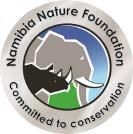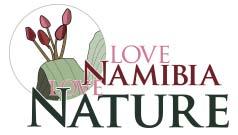Namibia Nature Foundation























Editing & proof reading: Gail Thomson
Photographs collection: Sunnypo Imalwa

Photo credits: Marcus Westberg, Rachel du Raan, Sunnypo Imalwa, Birgit Kotting, Manie le Roux, Titus Mwiitantandje Shaanika, NNF staff
Design & layout: Carmen Begley
Printers: Print Solutions: Swaco Group
NNF Publishing Statement: All rights reserved. No part of this publication may be reproduced, sold or used in any manner without the prior written permission of the Namibia Nature Foundation.
ABRIVA African Botanical Innovation and Value Addition
ACADIR Associação de Conservação do Ambiente e Desenvolvimento Integrado Rural
AGM Annual General Meeting
APAC African Protected Areas Congress
ATF Albatross Task Force
BCBU Bush Control and Biomass Utilisation
BCC Benguela Current Convention
CA Conservation Agriculture
CBNRM Community Based Natural Resource Management
CCFN Community Conservation Fund of Namibia
CCIU Climate Change and Inclusive Use of Natural Resources
CORB Cubango-Okavango River Basin
COVID-19 Coronavirus diesease of 2019
CRRRF Conservation Relief, Recovery and Resilience Facility
CSO Civil Society Organisation
DoF Directorate of Forestry
EU European Union
FOA Fisheries Observer Agency
GCF Green Climate Fund
GEF Global Environment Facility (UNDP)
GHG Green House Gas
GIZ Deutsche Gesellschaft für Internationale Zusammenarbeit (formerly GTZ)
GMUP Game Management & Utilisation Plan
HWCMAP Human Wildlife Conflict Management and Action Plans
IRDNC Integrated Rural Development and Nature Conservation
IUCN International Union for Conservation of Nature
IWT Illegal Wildlife Trade
JNCC Joint Nature Conservation Council (UK)
KAZA TFCA Kavango Zambezi Transfrontier Conservation Area
KCOA Knowledge Centre for Organic Agriculture
KfW German Development Bank
KHSA Knowledge Hub for Southern Africa
MAWLR Ministry Agriculture, Water and Land Reform
MEFT Ministry of Environment, Forestry & Tourism
MFMR Ministry of Fisheries and Marine Resources
MPA Marine Protected Area
NACSO Namibian Association of Community Based Natural Resource Management (CBNRM) Support Organisations
NAMRA Namibia Revenue Agency
NDC Nationally Determined Contribution
NDT Namibia Development Trust
NGO Non-governmental organisation
NILALEG Namibia Integrated Landscape Approach for Enhancing Livelihoods and Environmental Governance to Eradicate Poverty
NIMPA Namibian Islands Marine Protected Area
NNF Namibia Nature Foundation
NUST Namibia University of Science and Technology (formerly the Polytechnic of Namibia)
OKACOM Okavango River Basin Water Commission
PES Payment for Ecosystem Services
SADC Southern African Development Community
SAERI South Atlantic Environmental Research Institute
SDG Sustainable Development Goal
SMART Spatial Monitoring & Reporting Tool
SRT Save the Rhino Trust
TNC The Nature Conservancy
TOTOT Training of Teams of Trainers
UNAM University of Namibia
UN United Nations
UNDP United Nations Development Programme
UNFCCC United Nations Framework Convention on Climate Change
UNIQUE UNIQUE forestry and land use GmbH
VDC Village Development Council
WWF World Wildlife Fund
ZSFR Zambezi State Forest Reserve
I am once again impressed at the breadth and depth of the work the Namibia Nature Foundation (NNF) has managed to complete during this two-year period. The end of 2022 brings us to the conclusion of the 2017-22 Strategic Plan, heralding a new period of operations for the NNF. I look forward to our next five-year period with anticipation, knowing that our growing team will be ready to take on new challenges, develop new partnerships, whilst consolidating our current work. As part of our new strategy, we have restructured our work from four themes containing 12 focal areas to eight programmatic areas, as reflected in the structure of this report.
In 2021 the coronavirus (COVID-19) pandemic continued to affect our lives and the national and global economy. Nonetheless, the strong and coordinated policy responses to the pandemic crisis, coupled with progress in the roll-out of vaccinations, underpinned the rapid pace of recovery during the year. By 2022 all travel and meeting restrictions were lifted, allowing us to catch up on fieldwork activities and make substantial progress with all of our projects.
In both years, the NNF not only continued to deliver, but grew in capacity and improved its financial stability, which is a testament to the resilience and dedication of our Board, Senior Management Team and staff members.
The focal point at the NNF over the last year has been on corporate culture change: shifting from businessorientated administration to an internal and hybrid culture that excels at responding quickly and appropriately to donor and partner requirements. We have developed a total service culture across all the programmatic areas, and are building mutually beneficial relationships based on integrity, ethics and trust.
I am confident to say that the NNF continues to be Namibia’s leading conservation and sustainable development organisation, and fully supports the Government’s priorities in sustainable development and the National Development Plan (NDP), which includes the conservation of biological diversity and natural ecosystems, research and innovation, and employment creation in the field.
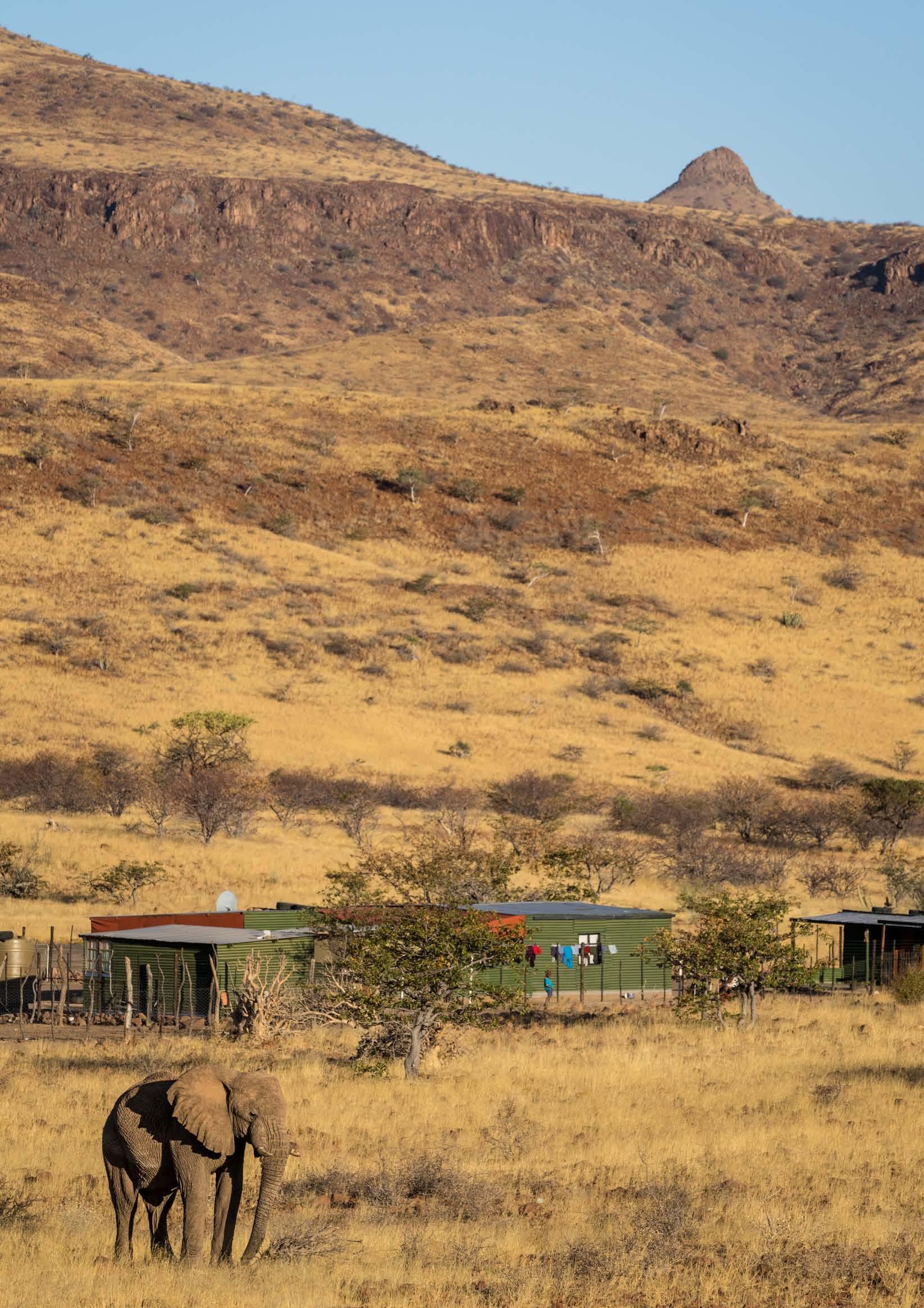
In order for the NNF to execute and roll out its approved strategic plan and mandate and to be able to respond appropriately to the needs of its key
stakeholders, it is necessary for the organisation’s communications and processes to be more integrated and streamlined. Thus the Board has approved further capital and human resources expenditure to update the current communications strategy. This requires devoting more resources to sharing information about the organisation our partners’ work, whilst still maintaining our focus on delivering project outcomes and services on the ground.
Our collaborative partnerships with different government ministries continue to grow in stature, and reflect the breadth of our work: on land and sea, in conservancies, community forests, inland fisheries reserves, and beyond. I wish to extend thanks to the Honourable Ministers and their teams of the following line ministries: Fisheries and Marine Resources (MFMR), Agriculture, Water and Land Reform (MAWLR), as well as Environment, Forestry and Tourism (MEFT), for their continued support and assistance during the period under review.
I would furthermore like to thank the Board, for their unwavering support and dedication. All that remains for me to do is to extend my gratitude to the staff and management at the NNF for their commitment and drive to ensure that the NNF delivers on its mandate even during difficult times.
Dr Roy Miller Board Chairperson
We have developed a total service culture across all the programmatic areas, and are building mutually beneficial relationships based on integrity, ethics and trust.
“ “
This report covers the Covid-19 years with all the attendant challenges and opportunities, yet by all accounts the Namibia Nature Foundation (NNF) has emerged from this period much stronger than before the pandemic. The global realisation that in-country, locally relevant partners are critical for delivering impact on the ground came as an opportunity for the NNF.

The NNF team responded sensibly to the challenges of Covid-19. Despite some differences in opinions, similar to those that played out across the world, it was impressive and genuinely heart-warming to see how the team maintained a common understanding, duty of care and sense of purpose throughout this period of uncertainty. This ensured that we were able to remain mission focused but also brought in new layers of organisational flexibility and strength.
As part of our evolution during the last two years, we have shifted from our four strategic themes, namely: social ecosystems; natural ecosystems and biodiversity; productive land and seascapes; and global environmental issues; into programmatic areas of work. These thematic areas still underpin our basic philosophy and approach but as we transition into a new Strategic Plan, they will be replaced by eight programmatic areas of work.
Our work on climate change has started to mature. In addition to being strongly embedded in our other areas of work, we are actively involved in National Climate Change Processes. Among other interventions, we submitted a readiness proposal through the Ministry of Environment, Forestry and Tourism (MEFT) to develop the National Adaptation Plan for Namibia. We are also working to strengthen civil society voices and amplify existing civil society input towards national and international processes concerning climate change.
We continue to be a partner in combatting wildlife crime, focusing on support to MEFT for anti-poaching efforts, and to the Namibia Revenue Agency (NAMRA) on port measures. We also have taken specific measures on illegal timber trade, whilst working with communities to increase pride in our biodiversity and develop local resistance to the scourge of wildlife crime. This feeds into our work on Community Based Natural Resource Management where the NNF remains an active member of the Namibian Association
of CBNRM Support Organisations (NACSO). We are the main field partner in supporting Conservancies and livelihood development in the Kavango, Erongo, Southern Kunene and Omaheke Regions.
Our work goes beyond the traditional terrestrial animal focus of CBNRM and includes Fresh Water & Inland Fisheries and Sustainable Forestry. The NNF has become a regional leader on community fisheries management by pioneering the establishment, running and continued evolution of Community Fish Reserves in KAZA and beyond. In the forestry sector, the NNF provides key support to government towards sustainable forestry and biomass utilisation. This includes support to State and Community Forests in the Zambezi and Kavango Regions by advancing non-timber forest products (including honey production) and diversified livelihood options alongside biomass utilisation.
In keeping with technical support the NNF is very active in Sustainable Agriculture where we are a major technical and implementing partner in the Zambezi and Kavango Regions. As part of this programmatic focus, we are working on value chain development and possible certification options, including supporting the Namibia Organic Association.
Our work on Marine & Coastal Conservation has, like most of the programmatic areas, advanced rapidly and the NNF is now the main national NGO supporting marine and coastal conservation. Our activities in this sector include working with the fishing industry to reduce by-catch, to research on sharks and rays, managing and expanding marine protected areas and ocean literacy, among other initiatives.
We complement all of this work with our Technical Services that we provide to development partners and government including the development of knowledge products through to assessments, policy analyses, scoping and feasibility studies.
There have been many highlights in the last two years and to call out one would be a disservice to another, so I am obliged to simply recognise that the achievements of the last two years have been incredible. The growing NNF team can rightly take credit for this, but we only do so in the knowledge that our success is dependent on our partners , from donors right through to beneficiaries. In this regard we
have been fortunate to retain amazing partnerships and build a whole host of new ones, which I trust are properly reflected in this report. Any omission or lack of adequate recognition is an error on our part and, depending on the scale of the omission, that drink or meal will be on me.
I must thank our Board for their steadfast guidance and support, which has been invaluable in guiding us but also keeping us on mission. The Board has been instrumental in setting our organisational character of responsibility to each other and our partners, and by engendering the NNF’s will-do ethos to get things done.
Globally, we are now into the new decade of conservation and whilst the post-2020 Global Biodiversity Framework targets are still to be finalised, we laid out our ambition in our last report to enter this decade with grounded optimism. We continue attracting youth into conservation, while our younger staff members are maturing into leadership, and we rising to the challenge of honestly and justly progressing human well-being in pursuit of a dignified re-integration with nature.
I am highly appreciative of my colleagues Edla and Frances who have pulled together all the pieces and taken up the shared responsibility of organisational leadership together with me. Finally what you will read in this report is based on an amazing team effort from a team that continues to inspire me and help me personally retain a sense of purpose and optimism. I thank each and every one of the NNF team who continue to go above and beyond.
Middleton Executive Director
This report covers projects and activities completed by the Namibian Nature Foundation (NNF) in 2021 and 2022. Our current projects cover seven programmatic core areas, each focusing on a different aspect of conservation and sustainable development, covering both aquatic and terrestrial environments. The scope of our work varies from providing in-depth training to individuals in rural communities through to developing national-level strategies and action plans and finally to developing international partnerships and support networks.
Despite the challenges posed by COVID-19, especially travel and gathering restrictions that affected our fieldwork in 2021, our team delivered and actively contributed to several key achievements in the Namibian conservation sector during these two years. This report also covers the technical services our team provided within and beyond Namibia’s boundaries, some emerging projects and a summary of our financial reports.
Sustainable agriculture:
• Trained and mentored leading farmers in the principles of organic farming, conservation agriculture and agroecology to increase yields, improve local diets and reduce land degradation
• Developed higher learning curricula for an officially accredited qualification in organic agriculture for the National Vocational Training Centres
• Supported the emerging organic farming sector in Namibia with a specific focus on the organic beef market as well as emerging value chains
Community Based Natural Resource Management:
• Assisted conservancies to whether the COVID-19 storm, while simultaneously improving their financial management structures
• Promoted democratic governance structures, increased business and livelihood opportunities, and contributed to sound natural resource management in conservancies
• Strengthened governance and planning at the national level as Secretariat of the Namibian Association of CBNRM Support Organisations
Combatting wildlife crime:
• Equipped and trained border security officials to prevent illegal wildlife trade across Namibia’s international land and sea borders
• Continued to prevent rhino poaching in conservancies in north-west Namibia through rhino monitoring, dehorning and rhino pride campaigns
• Improved anti-poaching capacity in Etosha National Park with the establishment of a special canine unit and provision of essential equipment
Sustainable forestry:
• Going “beyond timber” in Namibia’s woodlands and forests by promoting the value of non-timber forest products, developing new products and unlocking international markets
• Improved management and increased awareness of the Zambezi State Forest Reserve, while strengthening neighbouring community forests
• Coordinated a multi-pronged project to reverse land degradation, diversify livelihoods and promote sustainable harvesting practices in an agroforestry landscape
Freshwater systems and inland fisheries:
• Developed and launched the “Tackle Box for Community Fisheries Reserves” and Standard Operating Procedures for community fisheries
• Established new fisheries reserves while continuously improving the management and monitoring of current reserves along Namibia’s key perennial rivers
• Expanded the community fisheries reserve approach to neighbouring countries by building capacity among local stakeholders, starting in Angola
Marine conservation:
• Developing a management plan for the Namibian Islands Marine Protected Area (NIMPA), Africa’s second largest proclaimed Marine Protected Area
• Drastically reduced and maintained low levels of seabird bycatch in the demersal longline and trawling fisheries
• Created awareness of the importance of the marine environment among Namibia’s coastal communities
Climate Change:
• Contributed to readiness among civil society organisations and assisted government in Namibia to receive funding and implement projects through the Green Climate Fund
• Completed an assessment for a bush biomass power plant that aims to simultaneously improve rangeland condition and provide a source of green energy for the national grid
• Investigated the potential for carbon credit markets to fund conservation in Namibia, thus reducing reliance on international tourism in the wake of COVID-19
The scope of our work varies from providing in-depth training in rural communities through to developing national-level strategies and action plans
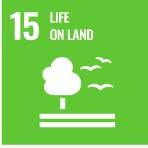
The NNF endorses the United Nations Sustainable Development Goals (UN SDGs) and aims to positively contribute to their achievement through implementing our strategy and supporting Namibia’s Fifth
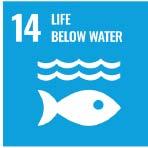
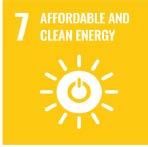
National Development Plan (NDP5) and the Harambee Prosperity Plan II. In so doing, we demonstrate the contribution that the environmental sector makes to the economy and people of Namibia.

Diversifying livelihoods and supporting sustainable rural economies are a key part of our projects in the CBNRM, forestry, agriculture, and fisheries (marine and freshwater) sectors.
Investigating bush biomass as a potential source of energy for Namibia
2

We train women farmers and plant harvesters to improve their yields and assist them to access markets for their products, while bringing women in to all of our training relating to CBNRM and fisheries.
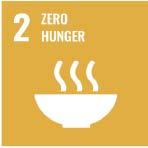
Our agriculture and freshwater fisheries projects improve the nutritional status of rural households.

Conducted studies on pollution and the value of an urban green space in Windhoek.
15
13 CLIMATE ACTION:

Climate change is one of our programmatic areas in which we are working with government and civil society to better prepare Namibia for rising global temperatures.

Our support for CBNRM and combatting wildlife crime protect key animal species, while our sustainable forestry projects reduce deforestation.
Our projects in the freshwater and marine environments promote sustainable fishing practises and the establishment of freshwater fisheries reserves and marine protected areas.
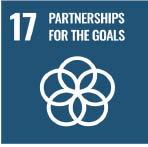

We promote agricultural, forestry and fishing techniques that minimise ecological impacts (including bycatch in the marine sector).
All of our projects involve partners within Namibia, including government and civil society, and beyond our borders.
We demonstrate the contribution that the environmental sector makes to the economy and people of Namibia by endorsing the UN SDGs
The Namibia Nature Foundation is Namibia’s leading conservation and sustainable development organisation. Our organisation promotes sustainable development, the conservation of biological diversity and natural ecosystems as well as the wise and ethical use of natural resources for the benefit of current and future Namibian generations. While grounded in Namibia, our work reaches across boundaries and is supported by donors from around the world.
Now celebrating 35 years of operation, the NNF continues to deliver its mandate to actively participate in key local, regional, national and global processes and contribute to environmental and sustainability solutions primarily within Namibia but also beyond our borders. We currently focus on sustainable development through community-based natural resource management (CBNRM), combatting desertification, pollution and waste management. This is reflected in the four thematic areas: Social Ecosystems; Natural Ecosystems and Biodiversity; Productive Land and Seascapes; and Global Environmental Issues. Projects falling under each theme emphasise policy, training and education to build national and local capacity to tackle these challenges.
The NNF partners with other non-government organisations (NGOs) and educational institutions and can call on a wide range of experienced associates to enhance and complement the NNF team. Our highly collaborative approach ensures wide ranging stakeholder engagement, input from experts and close working relationships with government departments, at both national and local levels. Our expertise and practical experience places us in a position to provide environmental, financial and project management services to our partner organisations and institutions.
Vision: an equitable, well informed society living in harmony with the natural richness of our environment.
Mission: to promote sustainable development, the conservation of biological diversity and natural ecosystems, and the wise and ethical use of natural resources for the benefit of all Namibians, both present and future.

Core values: Integrity; Teamwork; Accountability; Partnership; Safety, Health and Environment
We fully support the implementation and evolution of the national CBNRM Programme whilst also mobilising resources to build up alliances and partnerships to foster a more integrated approach to sustainable urban living.
We actively support species research and conservation, landscape and protected area management, whilst placing this work within a broader context of biodiversity, ecosystems and their services
We promote integrated planning, development and adaptive management to secure and enhance the ability of our land and seascapes to remain materially and intrinsically productive.
We as “global citizens” ensure that global environmental issues are mainstreamed into our work but also that our Namibian concerns and realities are fed into global processes. We further work on national policies to advocate their alignment with sustainable development objectives and best practices, which is also informed by our work.
An equitable, well informed society living in harmony with the natural richness of our environment.
“
Angus has over 15 years of senior management and organizational leadership in Africa and Europe. He brings a relevant mix of knowledge and technical experience in environmental economics, ecological resource management, agricultural management, and biodiversity policies. At NNF he provides overall leadership for the organization and also works directly on a number of projects, particularly in the field of environmental economics. He holds an MSc in Environmental Policy from Imperial College London and a BSc in Ecological Resource Management from Newcastle University. He has a great passion for the outdoors, a particular interest in raptors, and a love of fresh-water angling.

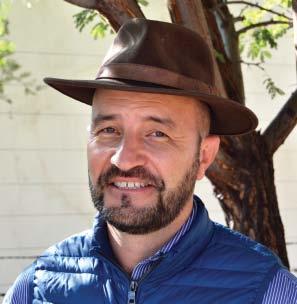
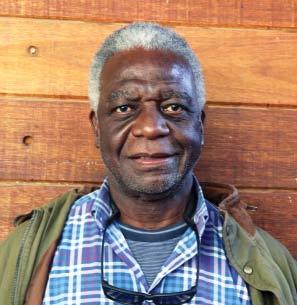
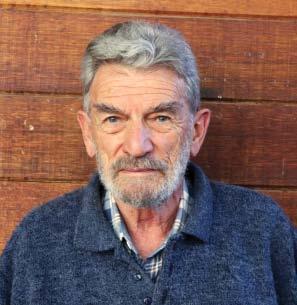 Middleton Executive Director
Middleton Executive Director




 Kaveru Director of Operations
Kaveru Director of Operations
Edla, as the Director of Operations, is responsible for the day-to-day running of the organization, with a primary responsibility of providing leadership for the organization’s financial and operational functions. She holds an MBA, and a Bachelor of Commerce degree and has completed various management development programmes. She has 20 years experience in financial management and corporate operations of which 10+ years have been in a leadership role. She was part of the team that successfully implemented the Millennium Challenge Account Namibia Compact between the years 2009 and 2015. Prior to joining the MCA team she worked as a financial management specialist on the World Bank-funded Project (ICEMA) and held several positions at the Namibia Nature Foundation between the years 1998-2005. She has a passion for the development sector in Namibia in general and a special interest in the improvement of livelihoods of rural Namibians through women empowerment.
Head of ProjectsFrances has recently joined the team as Head of Projects at the NNF, she has over 5 years of senior management experience and several years of project management experience. She joins us from the National Botanical Research Institute (NBRI), where she was Head of the National Herbarium of Namibia (WIND). Prior to that she worked at the Royal Botanic Gardens, Kew in the UK for 10 years as an Assistant Botanist and later a Botanist/ Curator in Africa and Madagascar Regional Team. Her background is botany, mainly in herbarium management and plant taxonomy but also has a broad knowledge the plant ecology and plant conservation. She enjoys fieldwork and has worked in Angola, Ethiopia, Mozambique, and Namibia. She holds an MSc in Plant Diversity from Reading University and a degree in Environmental Science and Geography with honours in Physical Geography from Rhodes University. Frances has always had an interest in the environment and conservation and more recently a passion for plant conservation, environmental education, and alien plant awareness creation.


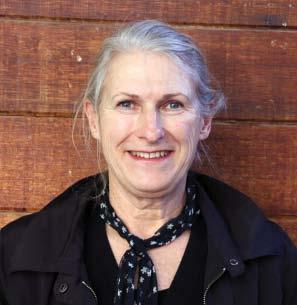

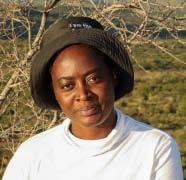


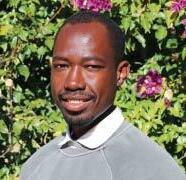




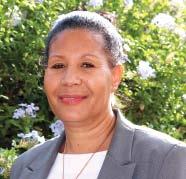









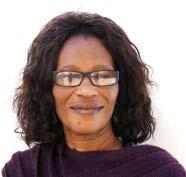




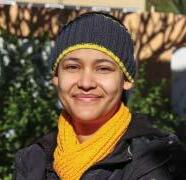


























We believe that the concept of nature is a human construct and that all society depends on the environment. We therefore take an anthropocentric approach to conservation, whereby conserving biodiversity is viewed as an integral part of human lifestyles in both
rural and urban areas. These social ecosystems are underpinned by strong and vibrant natural ecosystems and biodiversity that in turn create productive land and seascapes. All aspects of our work are related to and affected by global environmental issues and policies.
Community-based natural resource management (CBNRM) is a people-centred conservation approach that empowers local communities to manage plants, animals and their associated ecosystems to generate local benefits and drive sustainable development. Local communities are therefore recognised as the custodians of biodiversity and thus exercise their rights and take responsibility for managing these resources alongside government ministries and with the support of non-governmental organisations (NGOs).

The Namibian CBNRM programme operates under the auspices of the Ministry of Environment, Forestry and Tourism (MEFT) and with support from several non-governmental organisations (NGOs) working together under the umbrella of the Namibian Association of CBNRM Support Organisations (NACSO). The NNF hosts the NACSO secretariat and provides direct technical support to 20 conservancies in Kunene, Erongo, Omaheke, Kavango East and Kavango West of Namibia. Our support covers the three pillars of the
CBNRM programme: governance, livelihoods, and natural resource management. Furthermore, NNF provides technical support by developing Human Wildlife Conflict Management and Action Plans (HWCMAP) and Game Management and Utilisation Plans (GMUP) both within and beyond our focal conservancies.
Governance support involves strengthening the institutional capacity of conservancies, especially by increasing the accountability of conservancy man-
agement committees to conservancy members. Improving livelihoods entails assisting conservancies to set up and manage business enterprises that involve conservancy members.
Natural resource management activities include quota setting, anti-poaching patrols, annual game counts, attending to humanwildlife conflict and other incidences as part of implementing the Event Book System.
The Community Conservation Fund of Namibia (CCFN) administered the Community Relief, Recovery and Resilience Fund (CRRRF) to buffer the CBNRM programme from the impacts of COVID-19 by providing conservancies with enough funding to retain their staff during this crisis. The NNF and partner organisations in NACSO supported conservancies to accurately report on the funds received through CRRRF and apply for small project grants directly from the CCFN.
The increased financial reporting requirements on conservancies created an opportunity to improve financial management systems, benefit distribution mechanisms and community management structures. The NACSO Institutional Development Working Group (IDWG) – comprising the NNF, Namibia Development Trust (NDT) and Integrated Rural Development and Nature Conservation (IRDNC) – therefore implemented a project funded by the European Union aimed at improving governance in the CBNRM programme. The project supports 21 target conservancies in the Kavango East, Kunene, Erongo and North-Central Regions.
By the second year of project implementation, 90% of target conservancies had conducted their Annual General Meetings (AGMs) for the 2021 financial year, whilst financial accountability improved in all target conservancies due to the extra support provided. Village-level engagements enhanced inclusivity and active participation of community members, through focused discussions that highlighted the challenges and needs of specific communities or villages. At these meetings, diverse groups of

people, including women, youth, and marginalised communities like the San and Himba were well represented, some of whom expressed that it was easier to communicate in these smaller meetings than at large community AGMs.
Conservancy members need to have ways to engage not only with their local conservancy leadership structures, but also with various levels of government. In some cases, issues that affect the lives of conservancy members need to be brought up to the national level and discussed in parliament. Through a project funded by the US Embassy aimed at strengthening democracy within the CBNRM programme, the NNF has provided advocacy and communications training to community champions, leaders, women, youth and marginalised groups. With support from the Ministry of Information and Communications Technology (MICT), two community champions from the Kavango Regional Council presented their concerns regarding oil drilling in their region to the Parliamentary Standing Committee on Natural Resources.
In a livelihoods project funded by the Social Security Commission of Namibia, the NNF supported two conservancies in Omaheke Region with the contin-


Our support covers the three pillars of the CBNRM programme: governance, livelihoods, and natural resource managementHarvested devil’s claw George Mukoya ID, BEL, NRM meeting March 2022 Maurus Nekaro Cons HWCMAP consultations April 2022
ued operations of their Devils Claw Buying Points. The buying points were set up when the project commenced in 2019 to assist self-employed Devils Claw harvesters to generate income with improved access to markets for their product. The NNF facilitated signing of agreements between the buyer, Eiseb Conservancy and Omuramba ua Mbinda Conservancy. Consequently, 200 self-employed seasonal jobs were created, generating income of close to N$ 1 million to harvesters and their conservancies.
The NNF has assisted seven conservancies to access funding for livelihoods projects through the Climate Change and Inclusive Use of Natural Resources (CCIU) project funded by German development agency, GIZ. Each conservancy identifies possible projects that will provide their members with alternative livelihoods, such as the sale of Manketti, gardens and horticulture, and solar energy production. By the end of 2022, two of the proposals were accepted and the remaining five are undergoing review or feasibility studies.
As part of our natural resource management support, NNF assisted conservancies in southern Kunene to draft their Game Management and Utilisation Plans and monitor wildlife during the annual game counts. These plans help to improve conservancy wildlife management and provide information on wildlife trends ahead of the quota setting process for the programme that takes place every few years. The NNF provides on-going support and training for game guards who implement the Event Book in our target conservancies, and assist with annual Event Book audits.
In March 2022, the NNF was contracted by CCFN to develop Human-Wildlife Conflict Management Action Plans in three landscapes: Khaudum, Otjozondjupa and Kunene South. In a separate project


in Otjozondjupa, the NNF completed a preliminary investigation for establishing a Wildlife Credits Scheme for African wild dog dens in partnership with the Cheetah Conservation Fund and World Wildlife Fund (WWF) in Namibia. Livestock farmers target dens for destruction as a preventative measure or in response to livestock losses caused by wild dogs in the areas around their dens. If established, Wildlife Credits would pay conservancies based on the number of active dens on their land that are not destroyed, thus protecting this Endangered species (considered Critically Endangered in Namibia). Wildlife Credits Schemes are already being implemented in the Kunene Region for several species (e.g. rhino, elephant) with support from NNF, and negotiations are underway to extend Wildlife Credits to other elephant range conservancies in the Kunene and Erongo Regions. These and other activities reduce human-wildlife conflict and increase community support for conservation of potentially damagecausing species.
The NNF has continued to provide secretarial support for NACSO, with funding from the EU. This role includes producing an annual State of Community Conservation Report that covers all aspects of the CBNRM programme in Namibia. During 2021 and 2022, a thorough consultative process was held among NACSO members to draft a strategy document to guide the association through the next four years of operation. We look forward to being part of NACSO’s continued development and growth. During this period, the NNF prepared to participate in a stocktaking process for the whole CBNRM Programme led by MEFT, which may result in the establishment of a national CBNRM Forum. These processes, funded through the GIZ CCIU project, will allow stakeholders to reflect on the current state of CBNRM in Namibia and work together on aspects of the programme that need strengthening.
Wildlife crime that involves high value products that are trafficked internationally is a major threat to Namibia’s biodiversity. High value wildlife products include rhino horn, elephant ivory and pangolin scales and meat, while high value plant products include rosewood timber products and succulent plants (sold as whole specimens). Illegal wildlife trade (IWT) is now considered to be the world’s fourth largest internationally organised crime, generating between USD $7 and $23 billion every year. As a response to this surge in wildlife crime, a diverse range of public and private actors have ramped up their efforts to curb IWT nationally and
Our combatting wildlife crime projects thus focus on preventing poaching or illegal harvesting and tightening security border posts to stop IWT. Support for these activities is through five projects: two supported by the United States Department of State, two by the United States Agency for International Development (USAID), and one by the B2Gold Rhino Bar Fund.
The NNF focuses mainly on facilitating anti-poaching activities and supporting customs officials for intercepting traffickers, while WWF-Namibia and Rooikat Trust focus on supporting the investigating and prosecuting of wildlife crime. A long-term partner, Save the Rhino Trust (SRT), continues monitoring rhino and conducting anti-poaching patrols in the Kunene Region.
With funding from the US Department of State and USAID, NNF supports MEFT in Etosha National Park to cover running costs for some vehicles used for patrolling or specific rhino management work, flying time for the helicopter and fixed wing airplane to help with translocations and dehorning of rhino, as well as vital aerial patrols to support anti-poaching efforts. Equipment for Etosha field rangers and maintenance of the park radio system was also included in this support package. Our support extended to establishing a MEFT canine (K9) unit by covering the costs for importing the dogs, training for dogs and handlers, and K9 vehicle running costs. The canine units have been highly successful – for example, by June 2022, they had detected 299 concealed weapons at roadblocks including 31 unlicensed weapons.
The Namibian Revenue Agency, NamRA, previously the Department of Customs and Excise in Namibia has been assisted through focussed capacity development at the border posts and airports and the procurement of smaller pieces of equipment. Additional direct support went to Rooikat Trust and SRT for their respective activities. Rooikat provides critical support for the highly successful Blue Rhino Task Team, consisting of officers from the Protected Resources Division of the Namibian Police Force (NamPol) and the MEFT Intelligence Investigation Unit, amongst other LE agencies, which focuses on investigating wildlife crime incidents. Among the noted success of the Blue Rhino Task Team are pre-emptive arrests, whereby the team acts on intelligence to arrest people who are in possession of poaching equipment (e.g. guns, axes) and are clearly planning a poaching attempt, but before a rhino is actually killed.
While the government and many international donors and other stakeholders have invested heavily in stopping IWT, we lack information on the costs of IWT and the benefits being generated by curbing it. This type of economic information is important to help justify the investments being made, to ensure that the benefits generated are greater than the costs, and our solutions are economically viable. Supported by USAID’s VukaNow Activity, the NNF and the Conservation Strategy Fund assessed the economic impact of IWT in the Southern African Development Community (SADC) region, with a focus on Namibia. This environmental economics study included assessing the state
The NNF has assisted seven conservancies to access funding for livelihoods projects through the Climate Change and Inclusive Use of Natural Resources (CCIU), project funded by German development agency, GIZ
“Dehorning of a rhino by the MEFT staff Handing over equipment to NamRA to help fight wildlife crime across borders.
of knowledge on the economic impact of IWT (especially ivory, rhino horn, lion bone and pangolin scales) on national and regional economies in Southern Africa and providing a detailed assessment of the impact of poaching and IWT on the Namibian economy.
A uniquely Namibian approach to protecting high value species, particularly rhino in the north-west, is to generate broad community support for antipoaching efforts. With funding from USAID, NNF supports “rhino pride” activities in Erongo and Southern Kunene that includes youth-focused activities throughout the year and annual celebrations on World Rhino Day held in Khorixas. The annual celebration, co-hosted with SRT and attended by local and regional councillors, attracts over 1000 spectators and 250 participants in various sporting events held over three days.
These awareness events have led to communities in this region becoming more protective of their rhino and, despite being entirely unfenced communal land, this area has experienced remarkably few poaching incidences over the last few years. This success can also be attributed to SRT and the conservancy ‘Rhino Rangers’ who are members of the community appointed by the conservancies to patrol the rhino range in their respective areas. With funding from the B2Gold Rhino Bar Fund, NNF has provided rhino sighting bonuses, field allowances and fuel for patrol vehicles to ensure that the Rhino Rangers actively patrolled four conservancies in the Kunene Region even during the midst of COVID-19. (Other partners support additional conservancies.)
Awareness and communication around wildlife crime should not be limited to communities living in the rhino range, however, as the general public of Namibia

 K9 Unit Patrol
K9 Unit Patrol
also has a stake in the conservation of these species and can play a role in reporting trafficking. In 2021, the NNF completed a successful project funded by GIZ to improve the public communications outputs of MEFT and other stakeholders involved in combatting wildlife crime. Using short video clips, images and text published under the Love Namibia, Love Nature banner, the NNF provided clear and accurate information to the general public on the current status of wildlife crime in Namibia.
Namibia now boasts a strong coalition between the different law enforcement agencies working together with great effect and supported by numerous donors. The situation has changed drastically since 2015/16 that marked a high point for Namibia’s rhino and elephant losses, while relatively few poachers or traffickers were arrested. Now, poaching numbers are down and poachers and trafficking kingpins are frequently arrested. The holistic approach backed by strong partnerships is paying-off. More information on this is published in the annual Wildlife Crime Report published by MEFT and NamPol.
Sustainable forestry is an emerging programmatic area at the NNF, with a focus on “Beyond timber”, which recognises the value of Namibia’s forests and woodlands as a whole resource and not just for timber. Until recently, the emphasis of forest management in Namibia has been on timber extraction. Hardwoods from the Kavango and Zambezi Regions of Namibia including Pterocarpus angolensis (Kiaat), Guibourtia coleosperma (Rosewood), and Baikiaea plurijuga (Zambezi teak) have been extracted as the principal form of income for community forests within Namibia. In addition, Namibia’s forests and woodlands are being degraded through land clearing for agriculture and frequent burning. Diversifying the forestry activities to include non-timber forest products such as honey, Manketti and Devil’s claw improves livelihood resilience and relieves some of the pressure on woodlands for timber and agricultural land.
Our current projects focus on the Zambezi State Forest Reserve (ZSFR) and surrounding community forests. With funding from the COmON Foundation, we have worked closely with the Directorate of Forestry (DoF) to improve the status and management of the ZFSR and the adjacent Kwandu corridor. Legally, the ZSFR has yet to be formally gazetted as a reserve, which poses several problems from a management point of view. In practice, the Reserve is not clearly signed and DoF has limited capacity to prevent illegal harvesting activities or enforce the Reserve’s zonation plan.

The NNF and DoF have developed information boards for the DoF offices in the Zambezi Region to present the zonation map and rules for activities in each zone, road signs that indicate to people entering the ZSFR that they are entering a Reserve, and boundary markers to demarcate forest zones on the ground. Once the Reserve is gazetted, these signs will create awareness of the existence of the Reserve and its zones of use.
While gazetting the Reserve is still in progress, we have assisted DoF and the Namibian Police force to do joint patrols in the ZSFR to investigate signs of illegal timber harvesting and engage with Devil’s
Claw harvesters to ensure that they have the necessary harvesting permits. Our support includes training for officials tasked with conducting patrols and the production of a Forest Protection Booklet that contains the same information.
The second phase of this project started in March 2022 continues the support provided to DoF in the first phase and exploring ways to restore degraded areas in the ZSFR. This is part of a larger project that aims to support a connected, resilient, economically viable conservation landscape for people and nature in the Zambezi Region. The NNF project focuses on supporting DoF in the management and patrolling of the ZSFR and supporting four community forests
current
on the Zambezi
Poster identifying income-generating opportunities for local communities to evaluate and compare key development opportunities.
adjacent to the ZSFR in updating management plans and livelihood diversification, with a focus on honey, Manketti, and Devils Claw, introducing the concept of herding for health and documenting the biodiversity through inventories within the ZSFR with students and researchers from Namibia and abroad.

The NNF African Botanical Innovation and Value Addition (ABRIVA) project is working in collaboration with KAZA oils, a Zimbabwean-based producer of African plant products, and BlueSky Botanics, a UKbased manufacturer of natural botanical extracts. The objective of the project is to discover new botanical resources for the food, beverage, and/or cosmetic industries that could be commercialised and thus support livelihoods by providing harvesting contracts and Access and Benefit Sharing (ABS) arrangements.
We are working with four community forests within the Zambezi Region as part of the project and have identified four species that hold some potential: Diospyros chamaethamnus (Dwarf Jackal Berry), Berchemia discolor (Bird plum) both for flavouring and Terminalia sericea (Silver cluster leaf) for potential anti-aging properties. Samples of each of these species have been sent to the BlueSky Botanics for further analysis. If one or more of these species is found to have commercial potential, the project will work through Namibia’s newly established Access and Benefit Sharing legislation to ensure that the communities receive a fair deal that would contribute to income for the community forests and for individual harvesters.


In the Kavango, the Sustainable Forestry component of the larger OKACOM project, funded by the EU, focuses on reversing land degradation and livelihood diversification in the Kapinga Kamwalye and Maurus Nekaro conservancies. The team has mapped the natural resources within two conservancies and decided to focus on building value addition for Devil’s Claw and Manketti. A small area of intact riverine forest was identified in the mapping process, alongside a degraded piece of land, both of which are adjacent to the proposed fish reserve for Kapinga Kamwalye. The team has agreed with the conservancy to set up a joint venture nursery for indigenous trees that will generate income by selling some trees to Namib
Trees in Windhoek, while planting other trees along the river to restore the riverine habitat.
In Kavango West the NNF is the facilitator of the Namibia Integrated Landscape Approach for Enhancing Livelihoods and Environmental Governance to Eradicate Poverty (NILALEG) Project in the Nkulivere landscape. Nkulivere is an agroforestry landscape in the Mpungu Constituency with no formal conservation status, but some potential for sustainable forestry and conservation agriculture. The six-year NILALEG project with funding from the Global Environmental Facility (GEF) through the United Nations Development Programme (UNDP) takes an integrated landscape management approach that aims to reduce poverty through sustainable nature-based livelihoods, protect and restore forests and reduce land degradation.
The NNF has established a multi-stakeholder coordination structure for the project that involves various ministerial offices, NGOs, and representatives from churches, youth, people with disabilities and the Village Development Councils based in the Mpungu Constituency. We initiated a feasibility study to assess what kind of conservation platform would be most suited to this landscape, following indications from MEFT that it would not be suitable for a conservancy. Other feasibility studies looked at establishing a regional forest reserve in the landscape, using local timber for furniture production, and the possibility of Manketti production.
In the same period, we initiated activities and provided support to communities in the landscape. The NNF trained and supported 181 Devil’s Claw harvesters who signed an agreement with Ecoso Dynamics to buy their product. Ten local schools participated in a tree planting competition with the aim of teaching the pupils about the importance of trees and the broader environment, and how to plant and care for seedlings. Ten farmers in the landscape were provided with grass seeds to plant in their fields as a trial project to improve grazing availability outside the woodlands. A borehole was drilled and two earth dams dug to improve water provision for farms and villages. Finally, we assisted the informal community based organisations in the landscape to apply for funding from the Environmental Investment Fund of Namibia for five different projects.
An enlarged photo of the windmill to indicate the outcomes of the assessment of livelihood diversification opportunities.

Communities in north-eastern Namibia rely on crop production for food security and extra income in when harvests are greater than household needs. Traditional farming methods tend to deplete the soil nutrients over time, leading to shifting agriculture whereby farmers clear new land to plant crops every few years. Through our Sustainable Agriculture programme, we promote Conservation Agriculture methods and crop diversification that improve soil fertility and boost yields on the same plot of land, thus reducing the need for land clearing and degradation. This is coupled with linking farmers to organic producers’ networks, which opens new markets for farmers and increases prices fetched for their produce.
Since the end of 2019, the Knowledge Centre for Organic Agriculture (KCOA) has sought to enhance organic and agroecological agriculture in Namibia by increasing access to information and establishing networks in the organic sector. This Deutsche Gesellschaft für Internationale Zusammenarbeit (GIZ) funded continental project has established knowledge hubs in Northern, Eastern, Western, Central and Southern Africa. Namibia is part of Knowledge Hub Southern Africa (KHSA). The KHSA-Namibia has two implementation approaches: the first focuses on the organic farming sector at the national level, while the second trains and mentors individuals to become “multipliers” – i.e. those who can train other farmers.



Activities under the sector-wide approach aim to create national awareness around the environmental and health benefits of organic agriculture and agroecology through the radio and in-person events. The NNF has worked with the Namibian University of Science and Technology (NUST) and Vocational Training Colleges to develop curricula on sustainable and organic agriculture, which will train future farmers and extension officers. We have also investigated developing an organic beef value chain, which is currently at the market-testing phase.
The multiplier support activities focus on the local level, with participants selected from within the Zambezi Region. These training events go into more detail and provide the multipliers with not only technical skills and expertise, but also facilitation methods and skills as well as personal development. The program is based on training as well as regular individual mentoring. Among the many topics covered are soil management (fertility, compost, crop rotation, green manure, in-field diversity), pest and disease control, crop-specific aspects, irrigation systems, nursery management, the principles of organic farming, financial management, marketing of produce as well as consultancy services, knowledge sharing methods, decision making procedures and many others.
During an internationally facilitated Training of Teams of Trainers (ToToT) 27 interested multipliers from all over Namibia spent a week learning together. This has set a base for ongoing exchange between these participants and created networks of trainers in different regions of Namibia. To date, 111 (61 women) multipliers have so far been equipped with relevant technical and methodological knowledge on organic agriculture, how to convey this information and how to support networks in their own communities.
Training farmers on compost making for a sustainable long-term soil enhancement

Land preparation for vegetable production, using Conservation Agriculture principles. Seedlings are ready for transplanting.
6
3
they have learned from the past season and benefit during the 2022/23 growing season.
9 400 200 0
Yield [tons] Rainfall [mm]
Yield & Rainfall, 2016-2021 2016/17 2017/18 2018/19 2019/20 2020/21 0
Year
Yield comparison between Conservation Agriculture (CA) and Traditional Agriculture (TA)
The NNF has been supporting farmers to implement Conservation Agriculture (CA) techniques in the Kavango and Zambezi Regions for a number of years, funded through different projects. With funding from Resilient Waters, almost 800 farmers have been trained on CA techniques. Since September 2021 the Okavango River Basin Water Commission (OKACOM) project with funding through the EU has supported CA, nutrition awareness and vegetable production support in Maurus Nekaro Conservancy in the Kavango West Region and Kapinga Kamwalye Conservancy in the Kavango East Region. Through this, 50 farmers have achieved increased food security for their families and will be able to use what
In November 2021 an agroecology project was launched in the Zambezi Region. This project will not only focus on crop production, but also livestock and network support, including agricultural value chains. Through a holistic implementation of agroecological principles food security will be improved and habitats in this unique ecosystem protected. Thus far, 222 farmers have been trained in agroecological crop production, 180 on nutrition and 78 on vegetable production. Through partnerships within the region value chains for chili as well as cow peas are in the process of establishment.
A new farmer-to-farmer extension model is being practiced in Sikunga Conservancy, allowing well trained and knowledgeable local farmers to share their knowledge and skills with neighbouring communities. A demonstration plot for research on different soil fertility improvement techniques has been established and will inform the project about which techniques are most suitable for local conditions.
In mid-2022, the NNF signed two partnership agreements with Integrated Rural Development and Nature Conservation (IRDNC) for agricultural projects in the Zambezi Region. The first of these, which is part of the KAZA ARISE project, aims to assist farmers living near the Sobbe Wildlife Corridor. This corridor has been set aside within the Sobbe Conservancy for elephants and other wildlife to cross through the area. Farming near the corridor thus comes with high risk of human-elephant conflict. The plan is to provide a fenced plot (using electrified fencing) for a cluster of farmers. The second project is aimed at assisting selected households in the Bwabwata National Park to start their own backyard gardens, and later for these to train others based on the success of the gardens and lessons learned during the first project year.
Freshwater fish all over Africa, and especially in the north-eastern parts of Namibia, are an important source of protein for many communities and are key to increasing the socio-ecological resilience of riverine communities. Along the Kavango, Kwando, Zambezi and Chobe Rivers, communities’ daily activities and livelihoods are intertwined with the fish resource. Fisheries are a food source and income generator, allow for bartering, hold cultural values and support social activities, and are also an important resource in adapting to climate change. Fishing is part of the culture of riverine communities and is pivotal for social gathering across generations, but commercialisation has caused a severe decline of the fish stocks. A response to stop this trend is the establishment of community co-managed fisheries reserves.
Community co-managed fisheries reserves are water bodies that are identified by local communities, for which self-defined use restrictions designed to restore fish stocks are put in place and which are officially recognised by the Namibian Government. The rules are enforced by community fish guards and offenders are prosecuted. Fish monitoring data (collected by community resource monitors) reveal that fish reserves host a higher diversity of fish species, have larger fish populations and bigger fish on average than outside the reserves. The recovering fish stocks spill over into the wider river system; fishermen have reported increased catches, while fish have become more available to the communities as an affordable source of protein and micronutrients. Furthermore, healthy rivers have numerous ecological benefits: they are sanctuaries for birds and keystone species, and are critical for the integrity of our ecosystems.
The NNF’s Strengthening Community Fisheries in KAZA (Kavango-Zambezi Trans-frontier Conservation Area) project falls under the E€OFISH Programme, promoted and funded by the European Union. The overall objective of the E€OFISH Programme is to enhance the contribution of sustainable fisheries to the Blue Economy of Eastern Africa, Southern African and the Indian Ocean. The envisaged results of the programme include the improvement of policies and legal frameworks, compliance and law enforcement as well as small-scale fisheries management in the target regions.
Our project aims to improve sustainable fisheries management through ecosystem-based adaptation, thus enhancing the socio-ecological resilience of communities. This is the largest project within the broader NNF Community Fisheries Programme, involving a wide array of partners including those in KAZA countries beyond Namibia – Angola, Zambia and Botswana, working through the KAZA Secretariat. In Namibia, our focus is to assist existing or emerging conservancies to establish and manage their fisheries reserves, with 27 communities currently at various stages of establishing reserves. We recently developed a new approach to register an entire “riverscape” following requests from communities to be able to control all waterbodies in their area, embracing a conservation approach allowing for sustainable use, in addition to the strict “catchand-release only” approach.


Biological and socio-economic baseline surveys are done in newly established reserves to assess the initial state of fish stocks, and to understand the current value of fish and its contribution to the livelihood of riverine communities. One of the key results from this survey indicates that food security is an issue in all communities, with many people compromising frequently on portion size, food composition or frequency of eating.
The Standard Operation Procedures for Fisheries Reserves have been approved by the Ministry of
Fisheries and Marine Resources (MFMR) and are complemented by “The Tackle Box for Community Fisheries Reserves: A Step-by-step Approach to Establish Community Co-Managed Fisheries Reserves in Namibia”. The Tackle Box guides all stakeholders through the processes required to establish fisheries reserves, including eight milestones that are used to track progress. These were soft-launched during the African Protected Areas Congress (APAC) in Kigali, Rwanda in 2022.
Species-specific recommendations for commercially relevant fish species were generated, including criteria like the length and depth of fisheries reserves, but also habitat requirements, spacing, distancing and other factors. A Checklist for Fisheries Reserves was developed to capacitate more staff members and partners in facilitating sound decision-making. All of these tools and guidelines are designed to expand the fisheries reserve concept by allowing facilitators from the MFMR or other NGOs to assist communities in a similar way to the NNF team.
The Tackle Box and SOPs developed in Namibia provide an ideal starting point for organisations working in other KAZA countries. While face-to-face engagement with colleagues from neighbouring countries was restricted due to COVID-19, meetings were held online to brief them on how Fisheries Reserves are established and managed. With the lifting of travel restrictions, more transboundary
field visits and meetings are expected. Within KAZA structures, the original fisheries sub-working group has been merged with the Freshwater sub-working group and promoted to the level of a Working Group.


Through the Zambezi Trans-Boundary Fisheries Restoration Project, the NNF has promoted the establishment of fisheries reserves along the Zambezi River. This work involves building the capacity among community members to strengthen fisheries management and reduce overfishing. Working alongside MFMR, the team focused on establishing two new reserves (Ikaba and Nsundwa) and providing support to two established reserves (Sikunga and Impalila). Awareness-raising meetings were held among the fishing

Our project aims to improve sustainable fisheries management through ecosystembased adaptation, thus enhancing the socio-ecological resilience of communities
“Silvanus Nuuyuni standing with Joseph Lubanda from the Ministry of Fisheries and Marine Resources (MFMR) while they present the Kapinga Kamwalye Fisheries Reserve Management Plan to the Kapinga Kamwalye Conservancy community members during a validation workshop.

communities of Ikaba and Nsundwa areas to improve compliance with the law and create community buyin for establishing fisheries reserves. Baseline surveys on livelihoods and current fish stocks were also conducted in these areas. As a result of these efforts, the community in Nsundwa adopted the fishery reserve constitution and management plan, and appointed four fish guards and three fish monitors. In Sikunga an Impalila, improvements were made to fish monitoring data collection and the fish guards’ monthly reporting.
Another trans-boundary project was established in partnership with The Nature Conservancy (TNC), focusing on fisheries management in the upper Okavango in Angola. Due to COVID-19 travel restrictions, the first part of this project was confined to a desktop literature review of the fisheries situation on the Angolan and Namibian sides of the Cubango/Kavango River, along with an overview of relevant Angolan legislation. Three capacity building trainings were held virtually for the Angolan TNC team, the community support association ACADIR, and Ministry of Fisheries in Angola. Our Angolan partners have started engaging with five community cooperatives, although more support is required during fieldwork. A new partnership is being negotiated with TNC to take this next step.
The declaration of three fisheries reserves in Mayuni and Balyerwa Conservancies went almost unnoticed in 2020 due to the COVID lockdown preventing public gatherings. The certificate hand over ceremonies therefore took place in June 2021 for all newly gazetted reserves. Signboards were erected to indicate the boundaries of the reserves and the rules applicable in the reserves. In line with MEFT’s increasing adoption of the Spatial Monitoring and Reporting Tool (SMART) as a digital platform for monitoring and reporting in National Parks and conservancies, we
plan to adapt SMART to community fisheries, with Balyerwa and Mayuni earmarked as pilot sites. New conservancies along the Kwando, including Kwandu, Bamunu and Mashi expressed interested in establishing fisheries reserves.

Maurus Nekaro and Kapinga Kamwalye Conservancies received support to establish fisheries reserves with funding from the Resilient Waters Project – Kavango the Aqueduct Of Life: Supporting People Securing our Common Waters. Both communities indicated that fish stocks had been depleted due to unsustainable harvesting methods used in the Kavango River that have become more prevalent due to fishing commercialisation.
In Maurus Nekaro Conservancy the community agreed to ban the use of all nets and promote the use of traditional gear amongst other measures in line with the Inland Fisheries Act as part of their Management Plan. The Conservancy is awaiting support letters from the TA and Regional Governor to enable them to formally submit their request to be gazetted as a Fisheries Reserve. In Kapinga Kamwalye Conservancy the management plan is still being developed and will be presented to members at the next AGM.
The Joseph Mbambangandu was the first Conservancy to be gazetted as a Fisheries Reserve in the Kavango East and Kavango West Regions. With support from the OKACOM-UNDP, the conservancy set up a Fisheries Reserve that covers all of the freshwater bodies in the conservancy (including part of the Kavango River). The Conservancy currently has eight staff members who patrol these waters to ensure that only legal fishing gear is used. This is a more comprehensive approach to fisheries reserves gazetted in other conservancies, and long-term monitoring will reveal its relative success to other reserves.
Namibia has an amazing coastline, where the Namib Desert meets the cold nutrient-rich waters of the South Atlantic. The Benguela Current system off the coast of Namibia is one of only four major upwelling systems in the world. The Benguela Current is bounded by two warm currents – the Angola Current to the north and the Agulhas Current to the south. Despite the Benguela Current system being one of the world’s most productive and biodiverse marine regions, the Namibian coastal and marine environment receives little attention from conservation NGOs. Major issues like the crash of the sardine fishery, once the cornerstone species of the ecosystem, the lack of management of continental Africa’s largest (and currently unregulated) Marine Protected Area (MPA), and the potential development of an offshore marine phosphate mining industry appear to remain largely unaddressed by full-time conservationists. NNF is therefore involved in an increasing number of projects aimed at addressing some of these conservation needs.
The Namibian Islands Marine Protected Area (NIMPA) is Africa’s second largest proclaimed MPA. Situated along the southwestern coast of Namibia, the area incorporates almost 10,000 km2 of marine habitat that supports rich biodiversity. Since its proclamation, no formal management plan has been implemented, which places this important MPA and its ecosystems at risk to economic activities like mining and fishing taking place in sensitive areas. Without an enforceable management plan and regulations, the NIMPA remains effectively unprotected.
Significant progress has been made towards creating a management plan for NIMPA in collaboration with the Ministry of Fisheries and Marine Resources (MFMR). MFMR is currently revising regulations, with a management plan to follow. The MFMR are also coordinating and steering a national Sustainable Blue Economy, which is being developed through a Marine Spatial Planning (MSP) process. This is part of the review, realignment, and identification of Namibia’s Ecologically and Biologically Significant Areas (EBSAs). With support from the One Ocean Hub and in partnership with the South Atlantic Environmental Research Institute (SAERI), the NNF has aided this process by conducting an evaluation of Namibia’s Blue Natural Capital (i.e. marine ecosystem services),
which was presented in a workshop with other stakeholders in March 2022.
The NNF, with support from the Blue Marine Foundation and the Rockefeller Philanthropy Advisors, will continue to work with a broad array of partners to support the MFMR in establishing and resourcing a formal management plan to effectively manage the NIMPA. This will be supported by a concurrent process to drive future MPA delineation, designation and management by building up the ecological, social and economic arguments for marine protection and to bring these into the Blue Economy development.
The ultimate goal is to designate at least 10% of Namibia’s Exclusive Economic Zone as MPAs.
Improving MPA management is complemented by our other projects that work alongside the fisheries sector to reduce the impact of their activities in Namibia’s waters. The Albatross Task Force (ATF) project was implemented to reduce seabird bycatch in the Namibian longline and trawl fisheries, thus supporting the recovery of albatrosses and other seabird species.
The bycatch mitigation measures have been highly successful: 98.4% reduction in annual seabird by-
The ATF team raising awareness about seabird bycatch mitigation at a school in Swakopmund.
Titus

has promoted the establishment of fisheries reserves along the Zambezi RiverShaanika explaining the use of bird scaring lines to the Walvis Bay mayor Trevino Forbes
Climate change is likely to have huge implications for Namibia’s society and economy over the coming years and decades. Even in the most optimistic scenario where countries meet their stated emissions targets, global temperatures will continue to rise to between 1.5 and 2.0 degrees. Although it is not possible to say with any precision what impact a 1.5-degree or a 2.0-degree rise in global temperatures will have on the Namibian economy, the consequences could be severe. Economic sectors which contribute 15.5% to Namibia’s GDP are vulnerable to climate change and the poorest rural communities reliant on agriculture who are most at risk. Namibia will stand a better chance of tackling the coming challenges if it is well prepared and enacts the right policies and actions at the right time.

catch in the demersal longline fishery (over 20,000 seabirds saved each year) and 58% reduction in in the trawl fishery. The ATF has now trained 90% of the officials from the Fisheries Observer Agency (FOA) to monitor bycatch rates and keep the ATF database up to date. Based on our published data, we have worked with the MFMR, the fishing industry and other stakeholders to introduce regulations and enforce compliance thereto in order to minimise seabird bycatch.

The Benguela Current Convention (BCC), the Namibian Dolphin Project and ATF collaborated on several events on World Oceans Day aimed to create awareness among Namibian coastal communities. The ATF and BCC have signed a MoU to continue raising awareness among schools located in Namibia’s coastal towns. This is part of a broader NNF goal

to improve ocean literacy among schoolchildren and include these topics within the school curriculum.
A research project started in mid-2022 on sharks, rays and similar cartilaginous fish species supported by the Shark Conservation Fund (SCF). This project will generate a completely novel dataset on the target species (collectively known as chondrichthyans) in the NIMPA, and assess the degree to which they are threatened by various economic activities (e.g. as fisheries bycatch). The project will also establish which chondrichthyan species occur in other key marine habitats along Namibia’s coastline to inform management strategies for those species. The data generated will contribute to future decisions around the designation and management of MPAs to maximise benefits to chondrichthyans.
The NNF is working on multiple projects aimed at increasing Namibia’s readiness for climate change at every level. We are contributing directly to policymaking and agenda setting by supporting relevant ministries and stakeholders, for example in national adaptation planning. The NNF also implements projects to strengthen resilience and promote low carbon development, knowledge sharing and enhanced cooperation, and mobilising resources for addressing climate change.
The Green Climate Fund (GCF) is the most important multilateral instrument in climate finance to support a shift towards low-emissions and climate-resilient economies and societies as envisioned by the United Nations Framework Convention for Climate Change (UNFCCC) and the Paris Agreement. Civil Society Organisations (CSOs) play an important role in advocating for ambitious climate change adaptation and mitigation, transformative projects, transparency in project implementation and to bring on-the ground expertise to the discussion table.
The “Civil Society Readiness for the Green Climate Fund” project funded by the German Federal Ministry for the Environment, Nature Conservation, and Nuclear Safety (BMU) through the International Climate Initiative (ICI) and jointly implemented by Germanwatch and CARE International/Germany is implemented in 10 African Countries to strengthen the role of civil society organisations to fulfil these functions.
This includes enhancing collaboration and coordination between CSOs on climate change related issues by developing national platforms and building the capacity of CSOs on climate change and the Green Climate Fund specifically. This project developed a Training of Trainers course on the climate finance architecture, the Green Climate Fund, developing funding proposals, monitoring, and evaluation by civil society as well as different roles civil society can play, in addition to the development of knowledge materials and webinars. The project also builds networks between different African civil society organisations to ensure cross learning and enhance their capacity engage in international climate change debates, for example at Green Climate Fund Board Meetings or Africa Structured Dialogues. The project has a specific focus on promoting monitor-
Visiting the gardens of Oskop Conservancy that were funded by the EIF’s Enhanced Direct Access project.

Talking to the women of Uibes Conservancy about their integrated wildlife and sustainable rangeland management for improved livelihoods project funded by a EIF EDA grant. Men and women were interviewed separately to ensure everyone has a chance to share their views.

ing and evaluation of GCF-funded projects by civil society to ensure participation and engagement of the beneficiaries and communities affected by the projects and programmes. To this extent, the NNF is working with the Environmental Investment Fund of Namibia to develop lessons learned for the EIF’s GCF-funded enhanced direct access (EDA) project and visited project beneficiaries to talk about their experiences and impact of the project.
A changing more variable climate and increasing atmospheric CO2 levels are expected to contribute to increased bush encroachment in Namibia, which
was implemented to reduce seabird bycatch in the Namibian longline
already has considerable impacts on the productivity of land and key ecosystem services. Thinning the bush is an important means to reduce biodiversity loss, adapt to the impacts of climate change and ensure food security in a country where most of the population rely on natural resources and agriculture. At the same time, increases in intermittent renewable energies necessitate dispatchable energy sources to stabilise the grid.
With the operationalisation of a 40MW Biomass Power Plant, NamPower plans to establish a sustainable bush-to-electricity value chain which will drive the restoration of degraded, bush encroached land to enhance climate change resilience, while ensuring a shift away from fossil fuels and energy imports. The NNF supported NamPower in their endeavour by conducting a Greenhouse Gas (GHG) Assessment for the Otjikoto Biomass and Van Eck Power Plants (in collaboration with UNIQUE Forest and Land-Use GmBH and Airshed Planning Professionals respectively), as well as a vulnerability assessment for the Otjikoto Biomass Power Plant. This involved assessing the land use changes and impacts of using the biomass for power generation and comparing this to alternative technologies such as battery storage systems, coal-fired power plants, heavy fuel oils (HFOs) and liquified natural gas (LNG). Based on these assessments, the NNF also supported NamPower in writing funding proposals to implement the Otjikoto Biomass Power Project.
Environmental crises, such as climate change, often lead to the creation of new markets. Renewed ambitious targets to mitigate climate change made under the Paris Agreement in 2015 have sparked the development of ambitious new national emissions targets and regulations. Major technological changes and innovation are required to shift to more sustainable, low-carbon processes and technologies to achieve
these targets. In the more immediate term, heavy emitters who plan to transition to more sustainable technologies may use carbon credits to compensate for their emissions. Carbon credits can be generated by reducing emissions or enhancing and protecting carbon sinks. As such, carbon credits can be used to fund conservation and restoration activities.
Nature conservation in Namibia traditionally relies strongly on income from tourism. The global COVID-19 pandemic and collapse of the tourism industry has shown how fragile the reliance on a single source of income can be. There is thus an urgent need to diversify income streams for conservation. Payments for Ecosystem Services (PES) schemes such as carbon credits can potentially help to address this challenge. If implemented successfully, PES services can significantly contribute towards raising funds needed for biodiversity conservation.

The NamibRand Conservation Trust (NCT) implemented a pilot project to investigate the potential of carbon sequestration and access to the carbon credit market as a possible means to fund conservation initiatives in Namibia. The NNF supported the technical implementation by exploring the viability of carbon credits in dryland ecosystems, and potential management interventions to enhance carbon sequestration in degraded grasslands.
The Ministry of Finance has a key role to play in designing, enacting, and financing these policies and actions. Jointly with the Ministry of Finance and supported by the UK Foreign, Commonwealth and Development Office and consultants, the NNF formulated a Green Transformation Plan for Namibia which should provide long-term guidance to policymakers on how Namibia will achieve environmentally sustainable growth and employment creation for its people under a range of climate scenarios.
Presentation of the Otjikoto Biomass Power Plant project at a NAMA Facility side event at COP27.

Pictured here Director of Forestry Johnson Ndokosho, who presented the project, Mirja Stoldt (NNF), Dr. Sören David, Head of the TSU of the NAMA Facility and Tangeni Tshivute (NamPower).

Side
and Biodiversity”.
The NNF implements projects to strengthen resilience and promote low carbon development, knowledge sharing and enhanced cooperation, and mobilising resources for addressing climate change
“ “
The Namibia Nature Foundation and its staff have considerable experience and expertise across different areas including terrestrial and marine ecosystems and biodiversity, climate change, land degradation, forestry, environmental economics, sustainable development, and financial management. We have also developed extensive professional networks within Namibia, Southern Africa, and beyond, thus placing the NNF in a good position to share this expertise and provide technical services to other projects and partners. Core areas of NNF’s Technical Services include capacity building and the development of guidelines, environmental economics, policy work, and management planning, along with technical and scoping work.
Restoring degraded, bush encroached land is a key priority in Namibia’s national policies and international commitments. The development of bush-based industries in Namibia is important to drive rehabilitation efforts and finance the restoration of bush encroached land. Bush value chains such as charcoal, woodchips, bush-based animal fodder, and biochar, can use the bush biomass – an otherwise discarded side product of rehabilitation efforts – to create positive opportunities for the Namibian economy by increasing agricultural productivity and contributing to economic growth, employment, and energy security without competing with food production.
The domestic and international market for biomass is expected to continue growing over the next decade, driven by increased demand for energy and products. The Namibia Nature Foundation was requested by the Namibia Biomass Industry Group (N-BiG) with support from the Bush Control and Biomass Utilisation Project (2014-2023), implemented by GIZ, to update
the brochure “Harvesting and Processing Namibian Encroacher Bush - Compendium of Harvesting and Processing Technologies for Encroacher Bush in Namibia”, which provides guidance to Namibia’s growing bush biomass industry. The brochure presents and compares different methods for harvesting, processing, and transporting bush biomass, and best practices in sustainable harvesting and aftercare.
Environmental awareness and education encourage sustainable and efficient use as well as protection of natural resources for current and future generations. The NNF is committed to enhancing environmental education in Namibia and building capacity within the conservation sector. The conservation sector is one of the key sectors requiring knowledge, expertise and skills to successfully protect Namibia’s biodiversity and ecosystems. About 900 positions in conservation at higher management level in public and private institutions and the private sector in the SADC region are not filled with sufficiently qualified staff. In Namibia, about 500 qualified employees are needed in the conservation sector.
Dry forests comprise almost half of the tropical and subtropical forests in the world, but they remain under-researched and their ecosystem services under-valued, despite their significant support to community livelihoods across continents. The Southern African Miombo woodlands contribute to the livelihoods of more than 100 million people in urban and rural areas. Little is known about the state and resilience of the Mopane and Baikiaea woodlands that cover large parts of the Zambezi Region in north-east Namibia. Despite the efforts of Namibia’s government to regulate the use of wood such as timber, poles, or fuel wood for both own use and commercial use, land clearing for agriculture and illegal logging have caused the forest to slowly degrade to shrubland, considerably decreasing forest cover.
The emerging Zambezi State Forest Reserve is directly bordered by communal lands, creating a flow of resources and interactions between the reserve and neighbouring communities, and must be managed using an integrated approach. The NNF, supported by the Integrated Land and Water Management Programme of the World Bank and funded by the Nationally Determined Contributions (NDC) Support Facility, conducted a multi-level assessment of the State Forest and community forests to establish a baseline, which will support the development of income-generating activities.
Construction for the new UNAM Campus for the Department of Wildlife Management and Tourism has started. The new campus will blend into nature and will be equipped with state-of-theart laboratories, seminar rooms, lecture halls, a dormitory and a boat jetty.

To increase conservation expertise in Namibia, the NNF is supporting the KfW-funded expansion of the Department of Wildlife Management and Ecotourism at the University of Namibia Katima Mulilo Campus. The Consortium working on Component 2 of the Expansion of the UNAM Katima Mulilo Campus is supporting the Department of Wildlife Management and Ecotourism to adapt and revise its B.Sc. (Hons), establish M.Sc. curricula, enhance research activities, and establish international research networks. The aim is to develop innovative, practical-oriented, and integrated training courses that are adapted to the education, knowledge, and expertise requirements of the conservation sector.
The assessment will inform the sustainable management of the emerging State Forest Reserve in Zambezi with background information on the ecological, environmental, socio-economic importance of this ecosystem at regional, national and international levels. The community forests bordering the forest reserve are important to ensure that forest resources are both protected and used in a sustainable manner contributing to increasing the resilience of local communities’ livelihoods and the national economy. Finally, the assessment highlighted key lessons learned and challenges faced in the State Forest Reserve and neighbouring community forests, and provided short- to medium-term recommendations to address these challenges and create opportunities.
The Cubango-Okavango River Basin (CORB), covering some 225,649 km2, is home to one of the last near-pristine river systems in Africa. The river system flows from its headwaters in southern Angola through northern Namibia to the Okavango Delta in northern Botswana. Future developments can adversely impact the CORB’s environment, diverse biota and ecosystem services, and there is an urgent need to invest in protection of the basin’s biodiversity.
The Okavango River Basin Water Commission (OKACOM) envisioned “payments for ecosystem services” (PES) to achieve these goals and commissioned a scoping study to develop a detailed transboundary PES scheme with linkage to the CORB Fund and other potential funding mechanisms. Led by Anchor Environmental and supported by the GEF and UNDP, the NNF contributed to the scoping report on the “Development of a Transboundary Payment for Ecosystem Services Scheme for the CubangoOkavango River Basin”. This included 1) reviewing marketable ecosystem services and identifying the potential providers/sellers and beneficiaries/buyers for a transboundary PES; 2) reviewing the relevant regional and national policy and legislation and assessing local institutional capacity; 3) assessing international lessons learned in implementing PES in comparable situations; and 4) designing a suitable transboundary PES scheme(s) for the area linked to the CORB Fund. The final report included a management plan, monitoring and evaluation plan, marketing strategy, and a roadmap to implementation.
The NNF also works with partners to provide expertise for projects outside of Namibia. Together with the South Atlantic Environmental Research Institute (SAERI), the NNF conducted a Comprehensive Impact Assessment for an informed and evidencebased decision to be taken by the Turks and Caicos Islands Government in connection with the proposed adjustment of the boundaries of Protected Areas on the islands.
The emerging Zambezi State Forest Reserve is directly bordered by communal lands, creating a flow of resources and interactions between the reserve and neighbouring communities, and must be managed using an integrated approach.
“ “
Bush encroachment is a considerable challenge in Namibia, degrading and reducing land productivity on more than 45 million hectares. Land users have implemented measures to reduce bush densities for decades with varying success and environmental impacts. There is growing interest from the private sector as well as national and international development institutions to promote bush-based value chains in Namibia. The economic opportunities of using bush biomass for different value chains could lead to over-utilisation if the sector is unregulated.
The Ministry of Environment, Forestry and Tourism, supported by the Bush Control and Biomass Utilisation Project (BCBU), contracted the NNF to develop a dedicated framework to ensure the optimal management and use of bush resources to safeguard the sustainability of the resource base, as well as environmental and socio-economic benefits of bush control. The resulting National Strategy on the Sustainable Management of Bush Resources provides guidelines on responsible thinning to create a balance between rehabilitating and maintaining savannah ecosystems and commercially using bush resources.
The Strategy guides bush control and the development of bush value chains to ensure positive ecological and socio-economic impacts, including improved water and nutrient cycling, better soils, en-
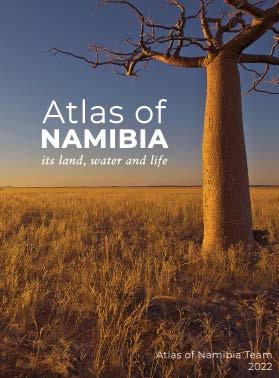
hanced ecosystem functionality and resilience, and improved biodiversity. The Strategy was developed based on an extensive consultative and participatory process involving key ministries, private sector, civil society, and academia, and establishes the necessary guidance to ensure that bush resources are used sustainably, that the development of the bush biomass sector benefits all Namibians, and that the environmental benefits of bush control are enhanced.

The Kavango-Zambezi Transfrontier Conservation Area (KAZA TFCA) is the largest terrestrial transfrontier conservation area in the world. The human population of 2.5-3 million people live alongside wildlife within a diverse and resource rich environment with multiple land uses and interconnectivity. High rates of poverty, human wildlife conflict and increasing pressures due to environmental variability exacerbated by climate change make the human population in the KAZA TFCA vulnerable. Tourism, including trophy hunting, has been one of the main strategies for improving livelihoods within KAZA. The COVID-19 pandemic and increasing international backlash against trophy hunting increasingly compromises livelihoods and makes diversification of livelihoods more important.
The NNF is working with the KAZA Secretariat and USAID’s Resilient Waters Programme to develop the

KAZA Livelihoods Diversification Strategy in order to harmonise future livelihood improvement efforts. The main aim is to provide an integrated framework and strategic priorities for diversifying and supporting the livelihoods of predominately rural communities within the KAZA TFCA. This includes 1) protecting and restoring natural resources that support livelihoods;
2) empowering people to consider a wider range of livelihood choices by supporting the development of human, social, productive, and financial capital;
3) building effective partnerships and institutions; 4) strengthening governance and enhancing the role of the KAZA TFCA Community Working Group as the key boundary organisation; and 5) enhancing the ability of local communities to capture the benefits of existing and new livelihood opportunities.
There is growing interest from the private sector as well as national and international development institutions to promote bushbased value chains in Namibia.
The “Reducing Pollution Through Partnership” project implemented by NNF, and the Joint Nature Conservation Council (JNCC) funded by the UK Department for Environment, Food and Rural Affairs (DEFRA) uniquely addresses the problem of pollution within the context of the twin challenges of biodiversity loss and climate change and their socioeconomic impacts – especially on health and safety. The project aims to scope and support the design of a wider pollution programme to enhance the ability of low- to middle-income countries to manage chemicals and to reduce air, chemical, and waste pollution. The project produced a State of Pollution Report for Namibia, an agrochemical toolkit on the safe handling and application of agrochemicals, and a framework for community-led pollution monitoring. The results from all pilot countries were discussed during a two-day conference to share experiences and learn from each other.
The pollution study also clearly outlined the need to further look at the sustainable management of fresh water, a scare resource in Namibia that is considerably threatened by over-utilisation, pollution, and climate change. New networks established under the pollution project led to discussions around water and waste management with partners such as the City of Windhoek and outlined the need to address issues such as air and water pollution in urban environments.
The NNF has considerable expertise that could contribute to addressing environmental issues in urban environments. In the reporting period, NNF conducted a study on the recreational value of the Avis

Dam in Windhoek. Urban green spaces such as Avis Dam can contribute to mitigating social problems in the urban areas, provide an attractive environment for residents, contribute to cooling cities, address air pollution and related health concerns, act as carbon sinks, increase access to shade, improve water penetration, protect biodiversity, and thus considerably contribute to the well-being of people. Not recognising the value of such green spaces may result in the degradation and poor management of such resources, depriving people of the full use of these spaces. Our study concluded that the Avis Dam fulfils an important social-recreational function for many of Windhoek’s citizens.
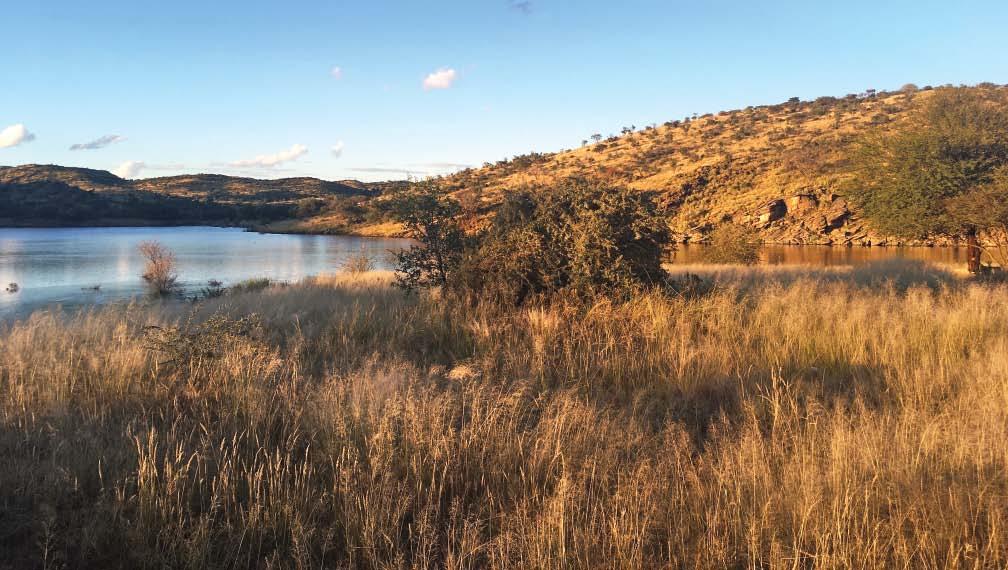
Plastic pollution is a problem in both terrestrial, aquatic and marine ecosystems in Namibia.

The NNF has developed a strong digital presence using several online platforms to ensure stakeholder and public engagement. The website defines the organisation’s mission, vision and objectives. It functions primarily as a source of information pertaining to vacancies, funding opportunities, technical and popular publications, and the organisation staff.
https://www.nnf.org.na/
The NNF’s Facebook page currently has over 7 000 page likes, and is used to publish and promote all relevant project activities in the form of pictures, videos, or links that direct users to publications, either on our website or partners’ websites.
https://facebook.com/Namibia.Nature.Foundation.NNF/
Instagram is popular amongst the youth, so the NNF actively shares content on this platform that is especially relevant to youth that are interested in environmental and conservation affairs. https://instagram.com/namibia_nature_foundation

Twitter is a platform frequently used by politicians, diplomats, and researchers. The NNF uses Twitter to engage in environmental and conservation conversations, especially to reflect on its past and present project work. ttps://twitter.com/NNF_Namibia
Many of the projects implemented by the NNF require a digital record of what was implemented. Some of these videos are professionally developed and shared on the NNF YouTube channel for public display. https://www.youtube.com/user/NamibiaNatureFDN
The communications department took the lead on a project focused on advocacy and communications. Supported by the US Embassy in Namibia, the NNF launched the Strengthening Democracy in the Namibian CBNRM Programme, which focused on three main objectives: 1) to scale-up citizen impact on environmental issues 2) to promote democracy in community conservation, and 3) to build capacity among NGO support partners. The main aim of the two-year project was to involve rural communities in the democratic process by empowering individuals within and representatives of communal conservancies to engage with the Namibian Parliament to raise awareness amongst the Legislature of issues that affect them. This was achieved through a multi-pronged approach which formed strong collaborations with key entities to enable knowledge and skills sharing for over 300 community members as well as provide opportunities for networking between members of parliament and community members.
The NNF has been engaged in creating a proactive, integrated communications strategy on environmental conservation and associated activities with funding from GIZ. During this project, an experienced media consultant, team members from World Wildlife Fund (WWF), Rooikat Trust, Namibia Chamber of Environment, the Namibian Police Force and the Office of the Prosecutor General worked together to streamline communication efforts of the MEFTs Public Relations Office. The targeted communications support system developed by this team includes messages on communities, wildlife crime, and natural resource benefits, human-wildlife conflict, conservation hunting and climate change.
These efforts ultimately create public awareness on the issues related to wildlife crime by developing a national feeling of pride and resilience regarding high value, at risk species (e.g. rhino) and Namibia’s wildlife in general. To achieve this goal, the “Love Namibia, Love Nature” brand was created as a neutral digital platform to promote relevant messages for a broad audience. There is currently a website, Facebook page, Instagram page and YouTube channel managed under this brand by the NNF communications team.
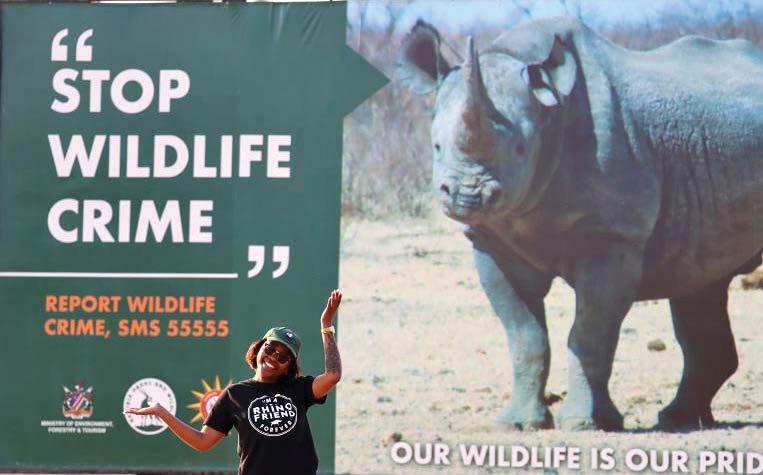
Following the closure of the GIZ project in 2021, the second phase of our digital campaign was funded by the USAID. This second phase focused on creating awareness of the SMS hotline (55555) for reporting wildlife crime and suspicious activities, and efforts to combat wildlife crime led by communities on the frontlines of conservation. Several promotional items were developed for distribution amongst community members to amplify our message.
In both online and off-line communications activities, we display prominent logos that are branded with either the NNF logo or the Love Namibia, Love Nature logo, depending on the context. The NNF logo reflects the scope and volume of the work in conservation and sustainable development. The rhino and the elephant are key conservation species in Namibia, while the green reflects conservation on the land and the blue represents the sky and water. Our slogan is “Committed to Conservation”. The Love Namibia, Love Nature logo includes Namibia’s national plant – the Welwitschia – signifying the relevance of this platform to the whole nation.
A screenshot of the official Love Namibia, Love Nature website http://lovenamibialovenature.nnf.org.na/
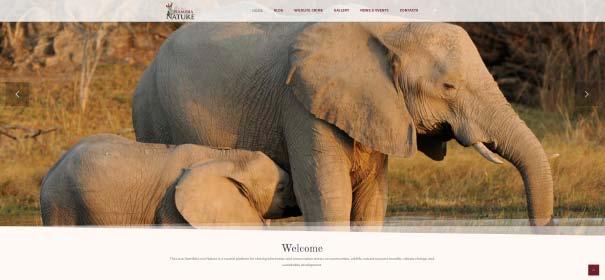
A screenshot of the official Love Namibia, Love Nature Instagram platform
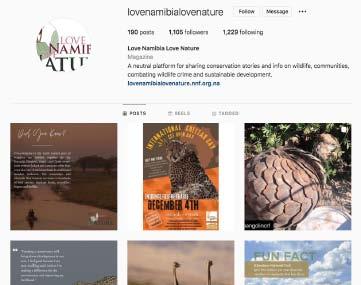
The NNF’s Annual Financial Statements are prepared for our core operating finances and against our Institutional (core) budget. This does not directly include the individual projects which we implement and/or manage, many of which are audited separately in accordance with individual donor rules and stipulations.
The summarised financial statements for the years ended 28 February 2021 and 29 February 2022 are the responsibility of the Trustees. They have been prepared in accordance with the framework concepts and the measurement and recognition requirements of the Namibian Statement of Generally Accepted Accounting practice-NAC 001: Financial
Reporting for Small and Medium Sized Entities. They do not include all the information required for full annual financial statements and should be read in conjunction with the annual financial statements of the Namibia Nature Foundation as at and for the years ended 28 February 2022.
The summarised financial statements have been derived from and are consistent in all material respects with the audited financial statements but are themselves not audited. A copy of the audit report and a full set of the audited annual financial statements are available on request (info@nnf.org.na) or on our website at www.nnf.org.na.

Balance as of 28 February 2019 N$ 19 798 366
Total Comprehensive Income for the year (218 779) Balance as of 28 February 2020 N$ 24 879 229
Total Comprehensive Income for the year 3 616 853 Balance as of 28 February 2021 N$ 28 496 082
Total Comprehensive Income for the year 2 672 050 Balance as of 29 February 2021 N$ 31 168 132
HEAD OFFICE
Namibia Nature Foundation Reg no: 00504971-011 76&78 Frans Indongo Road, Windhoek West Tel: +264 61 248 345 PO Box 245, Windhoek, Namibia
Namibia Nature Foundation: Swakopmund Office 6 Hidipo Hamutenya Street, Swakopmund Tel: Contact head office
Namibia Nature Foundation: Nkurenkuru Office Erf 547 Extension 2, Nkurenkuru Tel: Contact head office
Namibia Nature Foundation: Rundu Office Erf 1329, Industrial area, Rundu Tel: Contact head office
Namibia Nature Foundation Kongola Office Shop no:3, Zambezi Trans-Caprivi highway Tel: Contact head office
Namibia Nature Foundation: Katima Mulilo Office Ministry of Fisheries building, Katima Mulilo Tel: Contact head office
SGA 24 Orban Str, Klein Windhoek, Windhoek, Namibia P O Box 30, Windhoek Namibia
